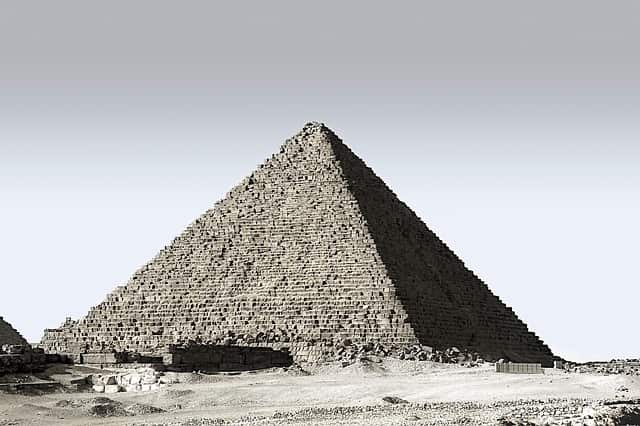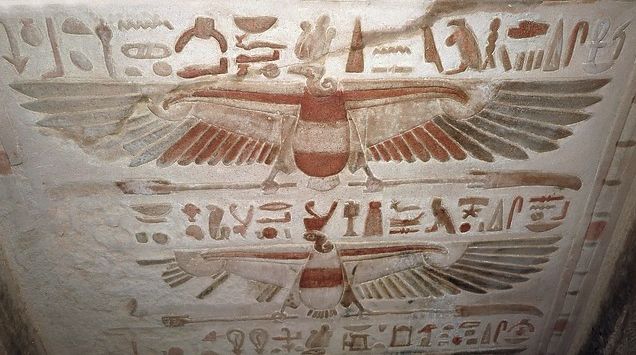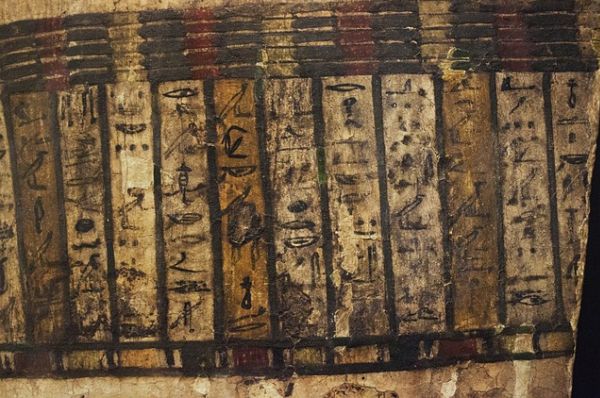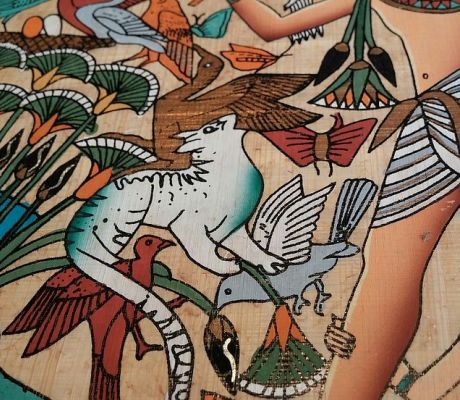Egyptian Painting – Representation of Gods, Exponents and More
Contents
What is Egyptian Painting?
Egyptian Painting was used to decorate the walls of temples and tombs, as well as to illustrate on papyrus. Fresco was a very common technique. To produce the colors, pigments were dissolved in water before being applied to a wet wall. The subjects were very varied and fluctuated between religious representations with symbolic character (gods, rituals) and scenes of daily life, executed with great realism. There are numerous representations of plants and animals. A characteristic of Egyptian painting is that the figures were painted from the side face, only their eyes and torso faced the observer. Another characteristic is the lack of perspective and the use of flat colors, rather being a bit blurred. On the other hand, men were depicted with darker skin than women.
Definition of Egyptian Painting
Egyptian painting can hardly be separated from sculpture, as Egyptian painters and sculptors were not artists in the modern sense of being a creative individual. Therefore, ancient Egyptian art was more the work of paid craftsmen who were trained and then worked as part of a team. The chief master craftsman was to be very versatile and able to work in many branches of art, but his part in the production of a statue or the decoration of a tomb was anonymous. The skilled craftsman guided his assistants and guided them in carrying out the work, also, he helped the novices, but his personal contribution could not be evaluated. Likewise, artists at all stages of their art worked together. The initial outline sketch or drawing was executed by one or more, who would then be followed by others, to carry out the intermediate and final stages. Likewise, the painters would follow the same way of working. In the unfinished scenes found, it is possible to see the corrections to the work by the hands of the less qualified. Many master craftsmen reached positions of influence and social importance, as is known from their funerary monuments. Imhotep, the architect who built the step pyramid of King Zoser’s complex, 2660-2590 B.C., was so revered in later times that he was deified. The credit for any work of art, however, is believed to belong to the patron who commissioned it.
How did Egyptian Painting develop?
The Egyptian civilization was very religious. Thus most works of Egyptian art involve the depiction of many gods and goddesses, of which the Pharaoh was one of them. In addition, the Egyptian respect for order and conservative values led to the establishment of complex rules for how gods and humans could be depicted by artists. For example, in figure painting, sizes were calculated by pure reference to the social status of the person, rather than the normal artistic rules of linear perspective. The same formula was used to paint the human figure over hundreds if not thousands of years. Likewise, the head and legs were always in profile, the eyes and upper body viewed from the front. In the case of statues and sculptures, the rules established that the painting of male statues should be darker than that of female statues. Likewise, the gods were also represented according to their position in the hierarchy of deities and always in the same costume. For example, Horus (the God of the sky) was always represented with the head of a falcon, Anubis (the God of the funeral rites) was always represented with the head of a Jackal.
The use of color in Egyptian paintings was also regulated and used symbolically. Egyptian artists used six colors in their paintings: reds, greens, blues, yellows, whites and blacks. Thus, red was the color of power, symbolizing life and victory, as well as anger and fire. Green symbolized new life, growth and fertility, while blue symbolized creation and rebirth. Likewise, yellow symbolized the eternal, as well as the qualities of the sun and gold. Yellow was the color of Ra and of all pharaohs, so, sarcophagi and masks were made of gold to symbolize the imperishable and eternal Pharaoh who was now a God. Likewise, white was the color of purity, symbolizing all things sacred and was typically used in religious objects and utensils by the priests. However, black was the color of death, the underworld and night.
Almost all surviving paintings from ancient Egypt were discovered in the tombs of pharaohs or high government officials and portray scenes from life. Known as funerary art, these pictures depict the narrative of life after death. Therefore, things such as servants, ships and food were added to the paintings to help the deceased on their journey through the afterlife. These paintings would be executed on papyrus, on panels, (using encaustic paint) or on walls in the form of fresco murals (using tempera). In addition, models (of ships, barns, butcher shops and kitchens) were included in the tombs in order to ensure the future well-being of the dead person. Likewise, as the Spirit inhabited the body, the preservation of the latter against decomposition was also critical. The use of tightly wrapped bandages to mummify the corpse and the removal and packaging of internal organs within ceramic canopic jars and other opulent sarcophagi became the norm among the ruling elite. All of these arrangements helped support a national industry of Egyptian artists and craftsmen who worked to produce the necessary works of art (paintings, sculpture, pottery, ceramics, jewelry and goldsmithing). Thus, both Egyptian painting and sculpture were highly symbolic and for most of Egyptian history, were not intended to be naturalistic or realistic. Therefore, sculptures and statues were made of clay, wood, metal, ivory and stone. Thus, stone was the most permanent and abundant. In addition many of the Egyptian sculptures were painted in bright colors.
In this sense, painting in ancient Egypt followed a similar pattern to the development of carved relief scenes, and the two techniques were often combined. The earliest examples of painting occur in prehistoric times, in patterns and scenes on pottery. Hence there is a heavy reliance on evidence especially to assess what has survived, as fragments are necessarily few due to the fragility of the medium.
In the same order, parts of two scenes of ships and figures that were painted on bedding and another on the wall of the tombs were found and valued. Similarly, panels of brightly colored patterns were found surviving on the walls of royal tombs of the first dynasty, as well as patterns depicted on woven rugs and curtains, as well as decorated on the walls of large houses. These patterns occur again and again throughout Egyptian history in many different ways. Some of the best can be seen on the sides of rectangular wooden coffins found in the tombs of Middle Empire nobles at Beni Hasan and elsewhere.

Likewise, the earliest paintings representative of the unmistakable traditional Egyptian style date from the third and fourth dynasties. The most famous are probably the fragments from the tomb of Itet at Medum, 2,725 B.C., showing groups of geese forming part of a large marsh colony scene (Egyptian Museum, Cairo). The geese, of various species, are stiffly supported among clumps of stylized vegetation, but the markings are carefully selected, and the colors are natural and subtle.
The Hellenistic Era (323-27 B.C.)
The influence of Hellenistic Greek art on Egyptian artists was a process that accelerated during the Ptolemaic era, encouraged by the naturalistic representation of individuals in paintings and sculptures, which was not unlike the process initiated by Akhenaton. Thus, portraits became realistic and color standards were relaxed. This trend was further encouraged by the practical Roman style of art. Thus, the most famous example of Hellenistic painting in Egypt during the period of classical antiquity is the series of Fayum mummy portraits, discovered mainly around the Faiyum basin, west of the Nile near Cairo. In this type of naturalistic portrait painting, strongly influenced by Greek art, especially Hellenistic Greek (323-27 B.C.), the Fayum portraits were attached to the shroud of the deceased. Preserved by the exceptionally dry conditions, these paintings represent only the largest body of the original art that has survived from antiquity.
The Egyptian Frescoes
Egyptian painting not only had the purpose of decorating the walls of tombs of the new kingdom, but also gave great beauty to the houses and palaces of the living. Thus, frescoes of reed, water, birds and enhanced animals were found on the walls, ceilings and floors of the palaces of Amaran and elsewhere. However, after the nineteenth dynasty there was a steady decline in the quality of such painting. On a smaller scale, painting on papyrus, furniture, and wooden coffins continued to be skillful until the later periods of Egyptian history, although there was also much lower quality work mass-produced.
What is the importance of Egyptian Paintings?
When archaeologists began to discover ancient Egyptian paintings, they were found in tombs and graves. This is important, as the paintings were never meant to be seen by human eyes after the tombs were closed. The Egyptians painted the walls and ceilings of the tombs, believing that whoever had died would be able to take all the images of their life with them and only the deceased and the Egyptian gods were the ones who could see the paintings.
Therefore, when the ancient Egyptian paintings are detailed, they seem very formal compared to the paintings of the Greeks and Romans. While the Egyptians ruled for over 3,000 years, their art and painting did not change much over time. The tombs of the pharaohs were covered with colorful depictions of what had happened to them, living a happy life of much eating and drinking in ever-perfect weather. The pharaohs were even shown with all their slaves around them, so that they could serve and take care of them in the afterlife.
In this sense, Egyptian painting was used in a number of different ways, including painting directly on the surface. Another method was the creation of reliefs, which is an image raised above the background and then painted with attention to the details of the image. There is a second type of relief that was carved out and is known as ‘sunken relief’, and the images were painted with a raised background around them. Although most of the Egyptian laws seen today do not show any color, they were originally painted with bright colors, which today are considered striking colors. It is even believed that the sphinxes were brightly painted.
The paint the Egyptians used was colored or dyed using minerals found naturally in their area and some that they imported from other places. The favorite colors used in painting were: red, blue, green, gold and black, but they also used white, pink and gray. The colors and all the objects found in the tombs were preserved by the cold dry environment and that is why they can be seen today with these bright tones. The artists ground the minerals into a fine powder and then mixed it with a kind of animal or plant ‘glue’. It was important to them the quality of the mixture, because the paint not only had to adhere to the walls, but it was designed and treated to last forever. Likewise, colors were taken very seriously in ancient Egypt, so the colors and shades of each paint were carefully selected. There were differences in skin tone color tone between men and women. Men had a darker reddish to reflect their outdoor life and women had a lighter, almost yellow-brown color to show that they lived mostly indoors or in a sheltered place.
In this same vein, Egyptian artists mixed colors so they could show details in the paintings closer to real life. Many of the colors had a number of different shades, depending on what they were going to use them for. Some of the Egyptian gods were also displayed with specific colors. Happy, God of the river was always painted blue to represent water. Each of the gods had their own specific color and included any article of clothing as well as their skin. Even the god Anubis had his Jackal head painted black, because he was the god of the dead. Copyrights were often painted with blue and gold, which were the symbols of strength and power.
What is the legacy of Egyptian Painting?
Ancient Egyptian art forms are characterized by regular and detailed depictions of humans and nature. They were intended to provide companionship for the deceased in the ‘other world’. The artists strove to preserve as much of the actuality as clear and permanent as possible. Integrity takes precedence over beauty. Some art forms present an extraordinarily vivid depiction of the time and life, as ancient Egyptian life was lived thousands of years before.
Egyptian art in all its forms obeyed a law that had to do with how to represent man, nature and the environment that remained almost the same for thousands of years and the most admired artists were those who replicated in the most accurate way, the styles of the past.
What are the most representative Egyptian Paintings?
The Tree of Life Painting
In the tree of life painting, the birds represent the different stages of human life. The gray bird symbolizes childhood. The red bird symbolizes the continuation of the childhood stage. The green bird symbolizes youth. The blue bird symbolizes adulthood. The orange bird symbolizes old age. In ancient Egypt, the east direction was considered the direction of life, because the sun rises in the east. However, west was considered the direction of death, the entrance to the underworld, because the sun sets in the west. It was believed that during the night, the sun traveled through the earthly world to make its way to the east so that it could rise in the east the next day. In the tree of life, it is taken into account that the birds represent the first four phases of life of all, facing east, but the bird representing old age faces west, anticipating the approach of death.
The book of the dead
The book of the dead is a funerary text that emerged in the new kingdom as a representation of the descendants. The painted scenes show the burial procession to the tomb. The procession shows the god Anubis, with the jackal-shaped head of the embalming, in a shrine. In the center, a priest drags a canope containing the viscera of the deceased. To the right a line of mourning women. Two of them, one facing the other, showing the characteristic gesture of mourning, which consists of raising the arms and palms backwards, as if striking the forehead or dust of the frame on the body. Between the two women is a small male figure who may be Paheby, the owner of the papyrus. Had the fragmented scene been complete, Paheby’s sarcophagus would have been at the head of the procession.
The Winged Scarab
The winged scarab symbolizes creation. This potent symbolism appears in tomb paintings, manuscripts, hieroglyphic inscriptions on buildings and sculptures. In addition to their use as an amulet by the living and the dead, scarabs adorned jewelry such as necklaces, bracelets, wrist cuffs and decorative wide necklaces.
The Cartouche of the Egyptian Pharaoh Tutankhamen
Pharaoh Tutankhamun is probably one of the most documented and heard among modern people. Since the discovery of his nearly intact tomb in 1922, Tutankhamun, popularly known as King Tut, has received unprecedented media coverage and frequent appearances in pop culture. King Tut’s cartouche, depicts the moment of his birth among other events. In Egyptian hieroglyphics, a cartouche is an oval with a horizontal line at one end, which would indicate in the text that it is a royal name. Thus, King Tut’s cartouche shows his birth name and throne. The two cartouches are of the two rampant warrior lions of Sekhmet crushing various ethnic enemies while Nekhbet flies overhead as a sign of protection.
The Battle of Nubia
King Ramses entered into numerous wars in his regime, and most importantly he was victorious in most of them, thus expanding the wealth of the vast Egyptian Empire in his 66-year rule from 1279 BC to 1213 BC. He is often regarded as the most famous and most powerful Pharaoh in the entire Egyptian Empire.
His battle against the Nubians, a wealthy colony from two years to hundreds of years at the time, is documented in the form of a papyrus painting. It depicts the battle on the south wall of the temple of Beit el-wali, in a Nubian fortress. Ramses II was depicted in battle against the Nubians in a chariot, while his two young sons Amun-khepsef and Khaemwaset appear behind him, also in chariots. On one of the walls of the temple of Ramses, it says that in one of the battles with the Nubians, he had to fight the battle all alone without the help of his soldiers.



